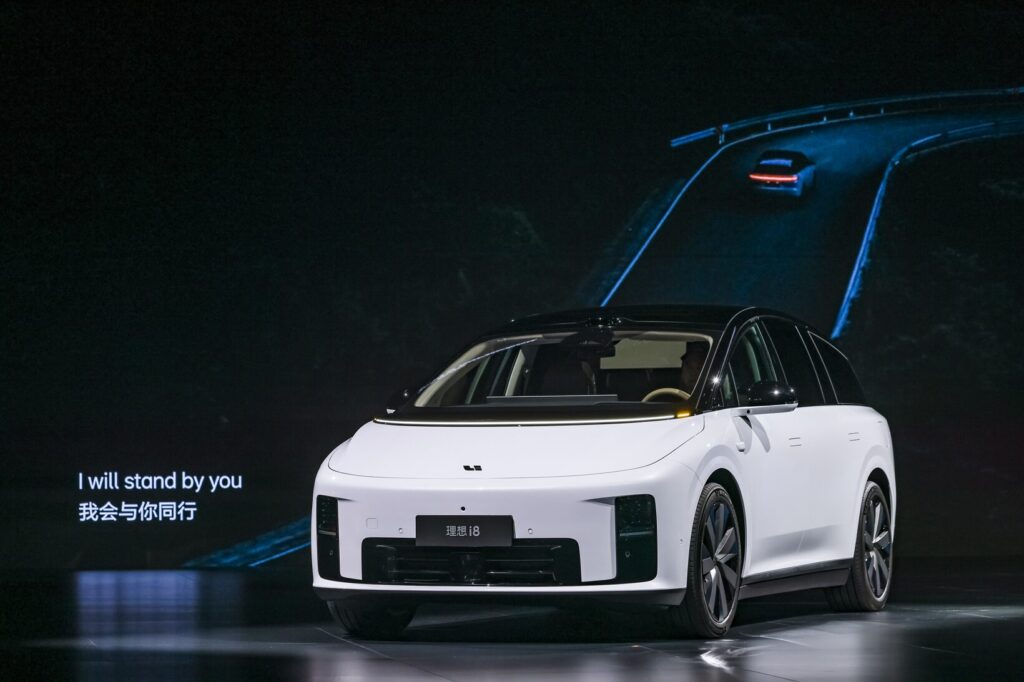Li Auto’s i8 Isn’t Just a Tesla Killer, It’s a Supply Chain Fortress: Why Western Automakers Should Be Worried

Introduction: Not Just a New Car, but a Declaration of Independence
On July 29, Chinese EV maker Li Auto unveiled its new six-seater SUV, the i8. With a starting price around $44,000, 5C ultra-fast charging that adds 500 km of range in 10 minutes, and a 0-60 mph time of 4.5 seconds, it looks like another formidable competitor in the EV space.
However, the most crucial story isn’t the vehicle’s performance, but the map of suppliers that bring it to life. The Li Auto i8’s component list is more than just technical data; it’s a powerful testament to China’s ambition for supply chain autonomy and technological sovereignty. This isn’t just about one car; it’s a strategic blueprint that Western automakers like GM, Ford, and Volkswagen cannot afford to ignore.
Supplier pool list here
The Real Story: A Look Inside the Supply Chain Fortress
Historically, Chinese vehicles were assembled with key components from Germany, Japan, and the US. The Li i8 supplier list shatters this old paradigm. While global giants are still present, the shift in power towards domestic players in high-value areas is stark and undeniable.
1. Chinese Dragons Seize the Brain and Heart
The most critical systems in a modern EV are its “brain” (smart cockpit and ADAS) and its “heart” (battery and powertrain). In the Li i8, these are overwhelmingly Chinese.
- The Heart (Battery): Global leader CATL provides the entire battery cell and pack, the single most expensive component.
- The Brain (Cockpit & ADAS): Desay SV delivers the domain controllers, the central computers for the cockpit and autonomous driving. Hesai Technology supplies the LiDAR, and Horizon Robotics provides the ADAS chips. These aren’t commodity parts; they define the vehicle’s user experience and safety capabilities.
This signifies a monumental shift. China is no longer just the world’s factory floor; it has built a self-sufficient ecosystem for the most advanced automotive technologies. You can explore this trend further in our previous post on the transformation of the EV market.
2. The Remaining Global Giants: A Shrinking Kingdom?
Of course, the decoupling isn’t absolute. Industry leaders like Bosch and ZF (chassis control), Nvidia and Qualcomm (semiconductors), and TE Connectivity (connectors) still hold key positions. Their expertise in foundational, high-reliability components is still indispensable.
However, their role appears to be shifting from core system architects to specialized component providers. This suggests a strategic “selective nationalization” by Chinese OEMs, where they control the core architecture while outsourcing specific, hard-to-replicate hardware. This shift in dynamics was also discussed in our analysis of future automotive industry trends.
The Brutal Bottom Line for Western Automakers
The Li i8’s supply chain reveals a dual threat for Western manufacturers:
- A Formidable Competitor: Li Auto and its peers can now innovate faster and potentially at a lower cost by leveraging a highly integrated and localized supply chain.
- A Geopolitical Risk: As Chinese OEMs prioritize domestic partners, the market for Western suppliers within China may shrink. More critically, it creates a dependency on a Chinese-controlled tech ecosystem for companies that still source components from China.
The question is no longer “How can we sell more cars in China?” but rather, “How do we compete with a nation that is rapidly building a closed-loop, state-of-the-art automotive fortress?” The old rules of globalization are being rewritten in real-time.
Deeper Dive: Recommended Books for Deeper Insights
For those who wish to delve deeper into the themes discussed today, here is a book I have personally vetted and recommend.
[Charged: A History of Batteries and Lessons for a Clean Energy Future]
- Why I Recommend It: To understand the rise of China’s EV industry, one must first understand the battery. This book provides a brilliant history of battery technology, explaining the science and business behind the dominance of companies like CATL and the geopolitical implications for the energy transition.
- 👉 [Amazon Book Link]
“As an Amazon Associate, I earn from qualifying purchases. This post may contain affiliate links, and I may earn a commission if you purchase through them.”
My AI Jazz Project: